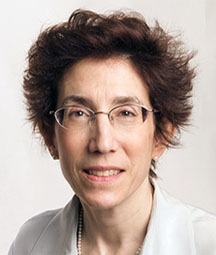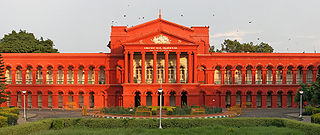Judicial discretion is the power of the judiciary to make some legal decisions according to their discretion. Under the doctrine of the separation of powers, the ability of judges to exercise discretion is an aspect of judicial independence. Where appropriate, judicial discretion allows a judge to decide a legal case or matter within a range of possible decisions.

Frank Hoover Easterbrook is a United States Circuit Judge of the United States Court of Appeals for the Seventh Circuit. He was Chief Judge from November 2006 to October 2013, and has been a judge on the court since 1985.

Enforcement is the process of ensuring compliance with laws, regulations, rules, standards, or social norms. By enforcing laws and regulations, governments attempt to effectuate successful implementation of policies.
In the United States, the exclusionary rule is a legal rule, based on constitutional law, that prevents evidence collected or analyzed in violation of the defendant's constitutional rights from being used in a court of law. This may be considered an example of a prophylactic rule formulated by the judiciary in order to protect a constitutional right. The exclusionary rule may also, in some circumstances at least, be considered to follow directly from the constitutional language, such as the Fifth Amendment's command that no person "shall be compelled in any criminal case to be a witness against himself" and that no person "shall be deprived of life, liberty or property without due process of law".
Reva B. Siegel is the Nicholas deB. Katzenbach Professor of Law at Yale Law School. Siegel's writing draws on legal history to explore questions of law and inequality, and to analyze how courts interact with representative government and popular movements in interpreting the Constitution. She is currently writing on the role of social movement conflict in guiding constitutional change, addressing this question in recent articles on reproductive rights, originalism and the Second Amendment, the "de facto ERA," and the enforcement of Brown. Her publications include Processes of Constitutional Decisionmaking ; The Constitution in 2020 ; and Directions in Sexual Harassment Law. Professor Siegel received her B.A., M.Phil, and J.D. from Yale University, clerked for Judge Spottswood Robinson on the D.C. Circuit, and began teaching at the University of California at Berkeley. She is a member of the American Academy of Arts and Sciences, and is active in the American Society for Legal History, the Association of American Law Schools, the American Constitution Society, in the national organization and as faculty advisor of Yale's chapter. She was elected to the American Philosophical Society in 2018.
Michael William McConnell is a constitutional law scholar who served as a United States Circuit Judge of the United States Court of Appeals for the Tenth Circuit from 2002 until 2009. Since 2009, McConnell has served as Director of the Stanford Constitutional Law Center at Stanford Law School. He is also a senior fellow at Stanford University's Hoover Institution, and of Counsel to the Litigation Practice Group at Kirkland & Ellis LLP.

Ann Althouse is an American law professor and blogger.
Textualism is a formalist theory in which the interpretation of the law is primarily based on the ordinary meaning of the legal text, where no consideration is given to non-textual sources, such as: intention of the law when passed, the problem it was intended to remedy, or significant questions regarding the justice or rectitude of the law.

Jeffrey Stuart Sutton is a United States Circuit Judge of the United States Court of Appeals for the Sixth Circuit.

Peter Welles Hall is a United States Circuit Judge of the United States Court of Appeals for the Second Circuit.

Sandra Segal Ikuta is a United States Circuit Judge of the United States Court of Appeals for the Ninth Circuit.
Hudson v. Michigan, 547 U.S. 586 (2006), is a United States Supreme Court case in which the Court held that a violation of the Fourth Amendment requirement that police officers knock, announce their presence, and wait a reasonable amount of time before entering a private residence does not require suppression of the evidence obtained in the ensuing search.

William "Bill" N. Eskridge Jr., is the John A. Garver Professor of Jurisprudence at Yale Law School. He is one of the most cited law professors in America, ranking sixth overall for the period 2010-2014. He writes primarily on constitutional law, legislation and statutory interpretation, religion, marriage equality, and LGBT rights.
New legal realism (NLR) is an emerging school of thought in American legal philosophy.

In law, an appeal is the process in which cases are reviewed, where parties request a formal change to an official decision. Appeals function both as a process for error correction as well as a process of clarifying and interpreting law. Although appellate courts have existed for thousands of years, common law countries did not incorporate an affirmative right to appeal into their jurisprudence until the 19th century.
Stephen Vladeck is Professor of Law at the University of Texas School of Law, where he specializes in national security law, especially with relation to the prosecution of war crimes. Vladeck has commented on the legality of the United States' use of extrajudicial detention and torture, and is a regular contributor to CNN.

Cornelia Thayer Livingston Pillard known as Nina Pillard, is a United States Circuit Judge of the United States Court of Appeals for the District of Columbia Circuit. Before becoming a judge, Pillard was a tenured law professor at Georgetown University.

In United States constitutional law, the penumbra includes a group of rights derived, by implication, from other rights explicitly protected in the Bill of Rights. These rights have been identified through a process of "reasoning-by-interpolation", where specific principles are recognized from "general idea[s]" that are explicitly expressed in other constitutional provisions. Although researchers have traced the origin of the term to the nineteenth century, the term first gained significant popular attention in 1965, when Justice William O. Douglas's majority opinion in Griswold v. Connecticut identified a right to privacy in the penumbra of the constitution.

Michael Andrew Fitts is an American legal scholar who is the current president of Tulane University in New Orleans, Louisiana and the Judge Rene H. Himel Professor of Law at the Tulane School of Law. He is also the author of numerous articles that have appeared in the Harvard Law Journal and other prestigious scholarly publications.













